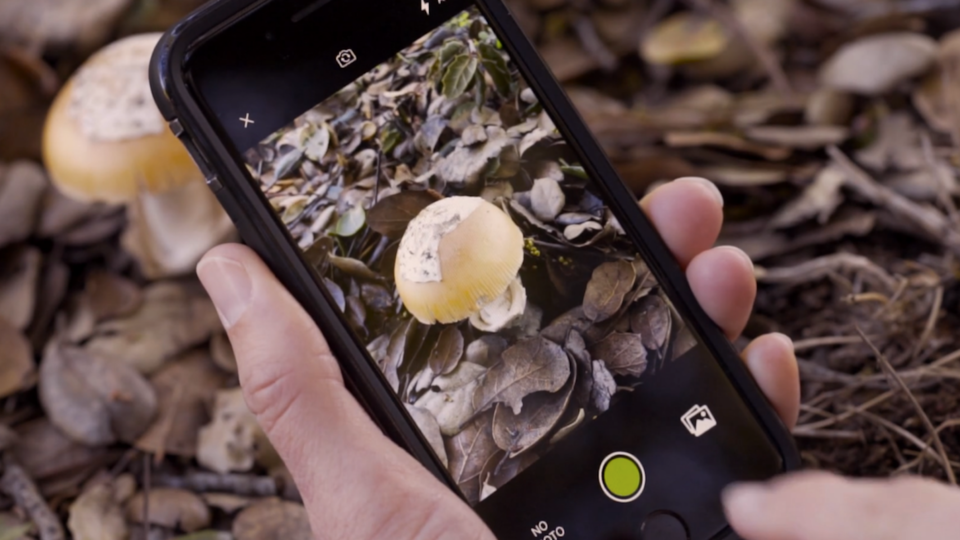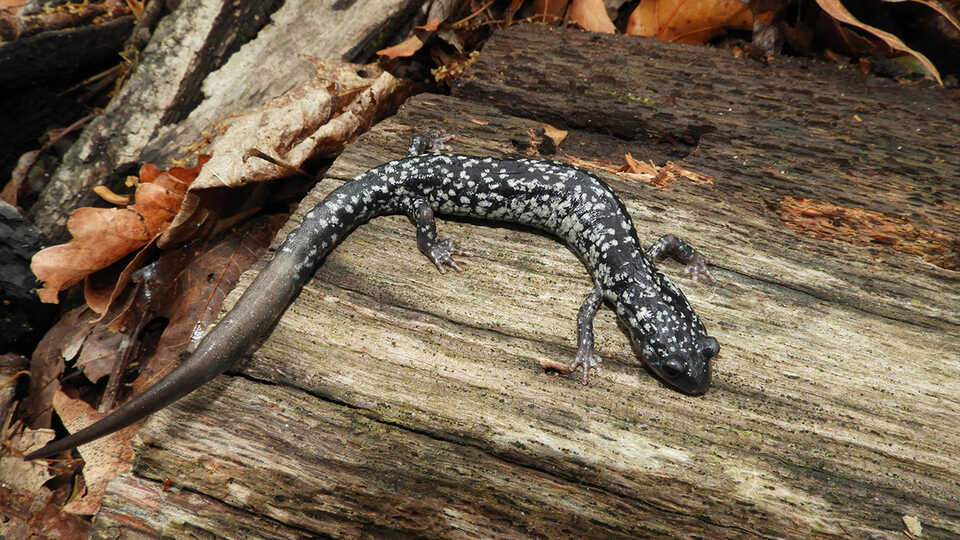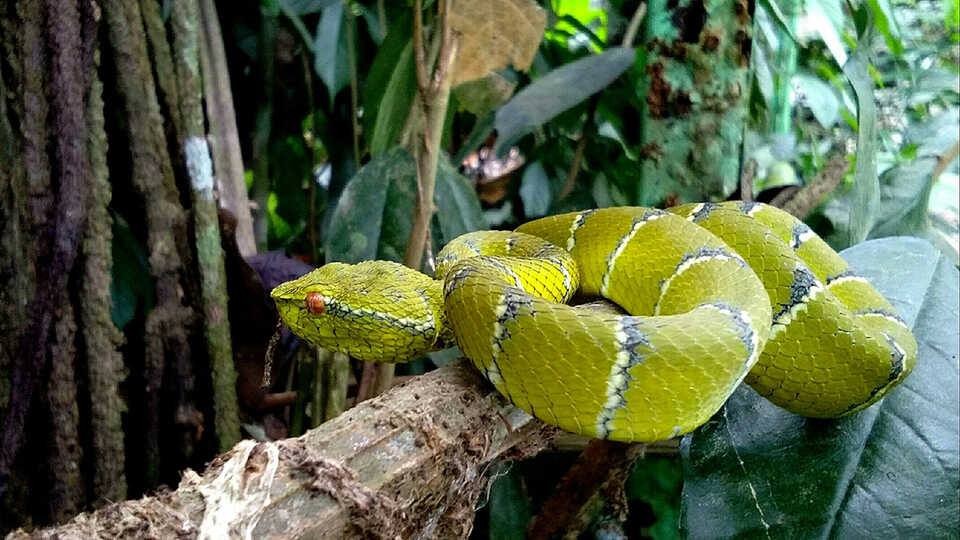Sixth-annual Challenge unites people with nature and each other as participants across the globe safely document Earth’s biodiversity however they can—even from their own home
SAN FRANCISCO (March 31, 2021) — On April 30, the City Nature Challenge—one of the world’s largest community science events—returns for its sixth year of connecting communities with each other and nature! With the COVID-19 pandemic still impacting many communities, this year’s Challenge will forgo the competition component to focus on the collaborative nature of the event and celebrate the myriad ways people can safely participate while adhering to their local public health guidelines. From socially distant biodiversity surveys to uncovering the wildlife in your own home, the four-day Challenge provides opportunities for everyone, wherever and however they participate, to explore the biodiversity of the natural world.
After launching the first-ever City Nature Challenge in 2016, the California Academy of Sciences and the Natural History Museum of Los Angeles County have now expanded the community science event to take place on six continents. Participation is easy: Any photos of wild plants, animals, or fungi taken during the Challenge can be uploaded to the free mobile app iNaturalist where an online community of naturalists confirms species identifications. The observations gathered through the platform become open-source data that help scientists and conservationists inform resource management and detect patterns of global biodiversity change. It also provides a way for people to connect with one another and nature during these trying times.
The collaboration begins Friday, April 30 at 12:01 am in each time zone and runs through Monday, May 3, 11:59 pm. People of all ages can participate by submitting their pictures of the wildlife in their homes, backyards, neighborhoods, or out in nature on iNaturalist, an online platform powered by the California Academy of Sciences and National Geographic. The collective scientific efforts from participants around the world will be tallied and results announced on May 10.
“We hope that this year’s City Nature Challenge provides people with a much-needed respite from this difficult year,” says Alison Young, the Academy's co-director of Community Science and co-founder of the Challenge. “With people around the world largely stuck indoors and feeling isolated from one another due to the pandemic, the Challenge provides an opportunity to enjoy the healing power of nature while safely participating in a global community science effort.”
Whether you join in from your own home or a local outdoor space, the City Nature Challenge is the perfect way to reconnect with nature and foster a sense of community. For both budding and veteran community scientists, participating is easy:
- Find wildlife in your home, neighborhood, backyard, or anywhere else! It can be any wild plant, animal, fungi, slime mold, or any other evidence of life, such as scat, fur, tracks, shells, or carcasses. Check out this guide for tips on finding the surprisingly abundant biodiversity in and around your own home!
- Take pictures of what you find using your phone or camera and then upload the photos to the iNaturalist platform.
- Learn more about the plants and animals you find as your observations are identified!
Those not able to take photos of wildlife can focus their efforts on identifying species documented in their area—even observations documented before the City Nature Challenge! Many organizers in cities around the world will be hosting safe community events, such as virtual identification parties, between May 4 – May 9.
By the end of the inaugural weekend in 2016, over 1,000 participants submitted more than 20,000 observations of nature to iNaturalist. Last year, the City Nature Challenge tallied more than 815,000 observations made by a record-breaking 41,000+ people in over 240 participating cities. With many scientists unable to travel due to the pandemic, these community observations are more important than ever.
During the 2020 City Nature Challenge, despite the challenges posed by the pandemic, participants in Miami spotted an amethyst hairstreak butterfly, a species nearly extirpated from the United States; in Panama, community scientists documented a vibrant—and critically endangered—harlequin frog; and in Washington D.C., participants recorded Arlington County’s first observation of a white-spotted slimy salamander in over 40 years. In total, over 1,300 endangered, endemic, or data deficient species were recorded during last year’s Challenge! This influx of information gives scientists, educators, urban planners, and policymakers insight into the biodiversity of locations throughout the world.
See participating cities and partner organizations.
See Bay Area events.
Social Media: #CityNatureChallenge
The California Academy of Sciences is a renowned scientific and educational institution dedicated to exploring, explaining, and sustaining life. Based in San Francisco’s Golden Gate Park, it is home to a world-class aquarium, planetarium, and natural history museum, as well as innovative programs in scientific research and education—all under one living roof. When opened, our hours are 9:30 am - 5:00 pm Monday - Saturday, and 11:00 am - 5:00 pm on Sunday. Admission includes all exhibits, programs, and shows. For reopening information and daily ticket prices, please visit www.calacademy.org or call (415) 379-8000 for more information.
The Natural History Museums of Los Angeles County (NHMLAC) include the Natural History Museum in Exposition Park, La Brea Tar Pits in Hancock Park, and the William S. Hart Museum in Newhall. They operate under the collective vision to inspire wonder, discovery, and responsibility for our natural and cultural worlds. The museums hold one of the world’s most extensive and valuable collections of natural and cultural history—more than 35 million objects. Using these collections for groundbreaking scientific and historical research, the museums also incorporate them into on- and offsite nature and culture exploration in L.A. neighborhoods, and a slate of community science programs—creating indoor-outdoor visitor experiences that explore the past, present, and future. Visit NHMLAC.ORG for adventure, education, and entertainment opportunities.
Press Contacts
If you are a journalist and would like to receive Academy press releases please contact press@calacademy.org.
Digital Assets
Hi-res and low-res image downloads are available for editorial use. Contact us at press@calacademy.org to request access.




